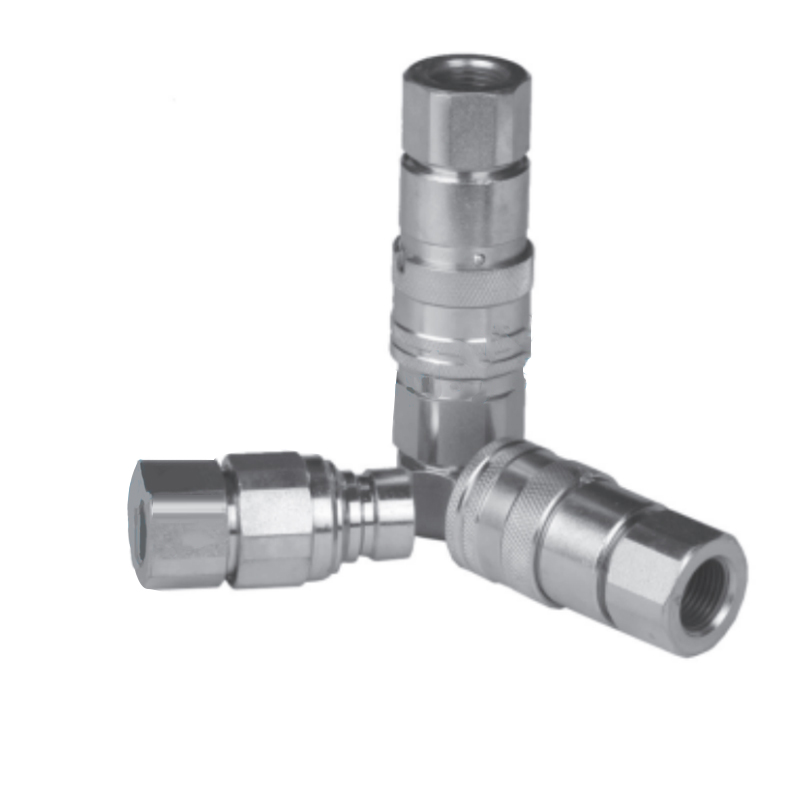How does the size and thread type of flat face hydraulic couplers affect their compatibility with different hydraulic components and systems?
The size and thread type of flat face hydraulic couplers play a crucial role in determining their compatibility with various hydraulic components and systems. Here's how these factors can influence the overall performance and functionality:
Connection Integrity: The size of flat face hydraulic couplers is paramount for establishing a robust connection. When properly sized, these couplers distribute hydraulic forces evenly, ensuring a steadfast and leak-free link between components. This is crucial for maintaining system integrity, especially in high-pressure hydraulic applications.
Flow Rate: The size of flat face hydraulic couplers directly governs their flow rate capacity. In practical terms, envision a hydraulic system requiring a rapid and substantial volume of fluid to move efficiently. Larger couplers, by virtue of their size, excel in facilitating high flow rates. Ensuring an optimal match between coupler size and the required flow rate is akin to widening the expressway for fluid transfer, preventing congestion and enabling the hydraulic system to meet the demands of high-flow applications with ease.
Pressure Rating: The sizing saga continues with a direct tie to pressure considerations. Picture the hydraulic system as a pressure-cooker of sorts, with components needing to withstand and manage varying pressure levels. The chosen size of flat face hydraulic couplers becomes paramount in this scenario. Selecting the right size ensures these couplers can handle the heat, figuratively speaking, safeguarding the system against potential failures or leaks. It's akin to fortifying the system against the relentless forces within, contributing not only to reliability but also to the safety of the hydraulic infrastructure.
Thread Type Compatibility: Threads, those unassuming yet crucial elements in hydraulic connections. In the vast landscape of hydraulic systems, different threads types, be it NPT or BSPP, are employed. Now, imagine the threads as the language these couplers speak to communicate with other hydraulic components. It's imperative to meticulously select flat face hydraulic couplers fluent in the same thread dialect as the components in use. This linguistic harmony ensures a snug fit, akin to a perfect handshake, reducing the risk of leaks and creating a seamless integration that enhances the overall efficiency and longevity of the hydraulic connections.
Adaptability: Sometimes, the hydraulic landscape resembles a diverse ecosystem, with components of different sizes and thread types coexisting. In this dynamic environment, the adaptability of flat face hydraulic couplers comes into play. They might need to don adaptors or reducers, akin to the versatile tools in a Swiss army knife, to harmonize with varying sizes and threads. Understanding the compatibility between these components is akin to being fluent in the diverse dialects of the hydraulic world, ensuring your system remains adaptable and efficient in the face of complexity.
Material Compatibility: Material choice for flat face hydraulic couplers is influenced by size and thread type considerations. Compatibility with hydraulic fluids, environmental conditions, and other system materials is critical for ensuring the durability and reliability of the couplers, especially in demanding industrial environments.
Ease of Installation: Selecting the right size and thread type simplifies the installation process, reducing the likelihood of errors during assembly. This not only ensures a proper fit but also minimizes downtime during system setup, maintenance, or repairs. Ease of installation is a pivotal factor contributing to the overall operational efficiency and cost-effectiveness of the hydraulic system.
GT-FF Flat face type hydraulic quick coupling













Contact Us